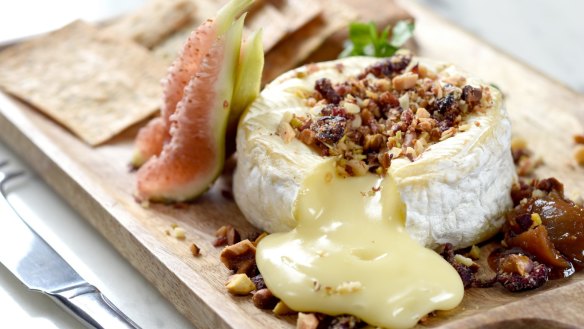What's the difference between brie and camembert?

What is the difference between brie and camembert? V. Sutherland
To answer this question, I knocked on the door of French cheesemaker and educator Ivan Larcher. He recently opened The Cheese School and Long Paddock Cheese in Castlemaine, Victoria. "The difference between brie and camembert is like asking the difference between Peugeot and Citroen," he says. "They have many different models and styles."
Both have what's known as a bloomy rind, the distinctive soft white surface mould, and must made of cow's milk in France to bear those names. "Both are traditionally farmhouse cheeses, but [are] now normally made in larger artisanal cheeseries or on an industrial scale. Brie is traditionally from east of Paris and camembert from Normandy. Camembert is smaller, around 250g, and brie is larger, the smallest being 400g and the largest being 1.2 kilograms. Camembert was made centuries after brie.
"In France, if you make a flat round cow's milk with a bloomy rind, you can call it brie or camembert. There, however, are two AOP (protected designation of origin) bries, brie de Meaux and brie de Melun – both unpasteurised and therefore unavailable here in Australia. There is so much difference between each type of brie, and each type of camembert that to compare the two families is not a productive exercise. Instead, taste them and enjoy them. Brie is excellent with crusty bread, perhaps some champagne or red wine, but nothing else. There is one AOP camembert, camembert de Normandie, and is best served with French cider, or cider made in a similar manner."
I have been given homegrown beans that are stringy. What do I do with them? W. Hancock
Every year our scarlet runner beans throw up shoots from a tuberous nodule below ground. Adventurous, they climb all over the garden and up to anything that stays vertical for long enough. With heart-shaped leaves and pretty red flowers, they are a garden delight. But they get tough and stringy so quickly. The best way to tackle stringy beans is to partially snap off the stalk end and pull downwards to remove the seam's stringy cordon.
To cook, chop the beans into matchbox length segments and cook them in a little but very hot oil until the skin begins to blister. Reduce the heat, add a little crushed garlic, a little salt, and ground cinnamon, stir through and then pour over a tin of chopped tomatoes (or about four chopped fresh tomatoes). Cook until the beans are soft and the tomato reduced. Excellent with barbecued foods. Another method is to finely slice the beans on the diagonal, blanch, and dress with fresh herbs, finely sliced onion and a vinaigrette.
Letters
"Last week, you mentioned that if you defrost a frozen chicken on a bench, it will let the bugs on the skin breed up," writes S. Stanley. "Surely freezing a chicken would kill any bacteria." Fans of the Star Wars series will remember when Han Solo was betrayed by Lando Calrissian and frozen solid in a block of carbonite. Han was later thawed and went on to kill lots of stormtroopers. Like Han Solo, bugs such as salmonella and E. coli are inactivated by freezing but do survive. Although initially sluggish, under the right conditions, such as being at room temperature on a good food source for hours, they can breed up and go on to cause sickness or even kill. So thaw your food in the fridge.
Send your vexing culinary conundrums to brainfood@richardcornish.com.au or tweet to @foodcornish
